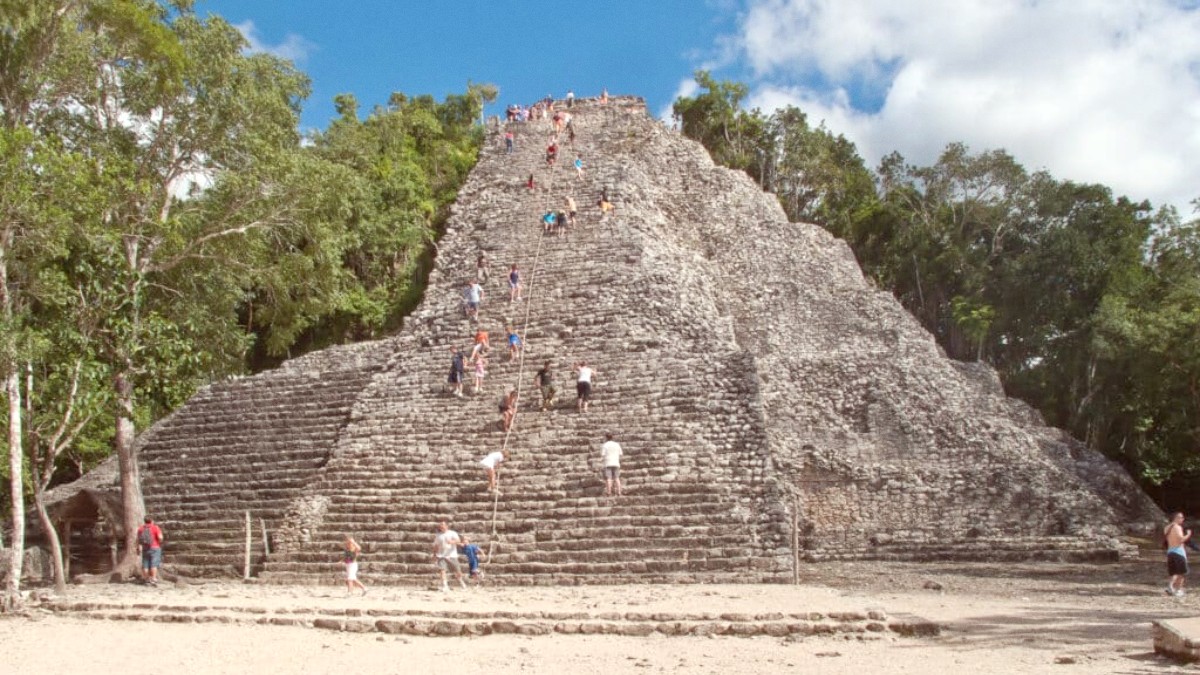
Yucatan Peninsula, Mexico
ADO Buses: These represent Mexico's first-class bus service, presenting comfortable, air-conditioned journeys between major towns and cities. They are dependable for longer distances. The main ADO bus terminal in Tulum serves as a central hub for connections to Coba, Playa del Carmen, Cancún, Mérida, and other significant destinations across the Yucatán Peninsula. From this station, you can find direct ADO buses to Coba several times a day.
Colectivos (Shared Vans): These are private, air-conditioned passenger vans operating on fixed routes. They serve as a popular and economical local transport method for shorter distances, linking towns and villages. In Tulum, colectivos heading to Coba typically depart from a designated stop on Calle Beta Sur, near the ADO bus station. In Coba village, colectivos gather near the archaeological site entrance.
Public transportation may not be fully accessible for travelers with mobility challenges. Steps to board can be high.
State your destination clearly. Practice "A Coba, por favor." Have small bills. Confirm fare with driver beforehand.
Newer ADO buses might have limited accessibility features, but this is not guaranteed.
600-1000 MXN ($30-50 USD)
50-150 MXN ($3-8 USD)
150-300 MXN ($8-15 USD)
Authorized taxis at CUN are more expensive than buses/shuttles.
Renting a car, scooter, or bicycle presents independence and flexibility for exploring Coba and the wider Yucatán region. Each option presents specific requirements and considerations for travelers.
Bicycles are available for rent at the Coba ruins entrance, the most popular way to explore the site.
Many hotels and shops in Tulum offer bicycle rentals, popular for local navigation.
Drive defensively. Always be alert for unmarked speed bumps and wildlife.
Exploring Coba and its vicinity on foot or by bicycle offers unique perspectives, permitting a more intimate experience with the ruins and the natural environment.
Excellent infrastructure with designated, well-maintained dirt paths connecting main structures.
Highly enjoyable and efficient way to explore.
Dedicated bike paths exist along Highway 307 in Tulum town, connecting to the beach road.
Popular way to get around Tulum.
Be aware of surroundings and traffic. On roads without bike lanes, cyclists share with vehicles.
Helmets are recommended. Drive defensively and stay visible.
Beyond standard options, Coba presents unique local transport that adds to the travel experience and navigates the sprawling archaeological site effectively.
Not applicable for Coba. Coba is an inland archaeological site and lacks river or boat taxi services.
The Coba site presents challenges for those with significant mobility issues due to uneven terrain and unpaved paths.
Plan carefully or contact tour operators for accommodations.
Utilize local transport options like colectivos and tricycle taxis for an authentic and efficient Coba experience.
Planning your transportation based on your preferences for comfort, cost, and independence will contribute to a smooth journey.